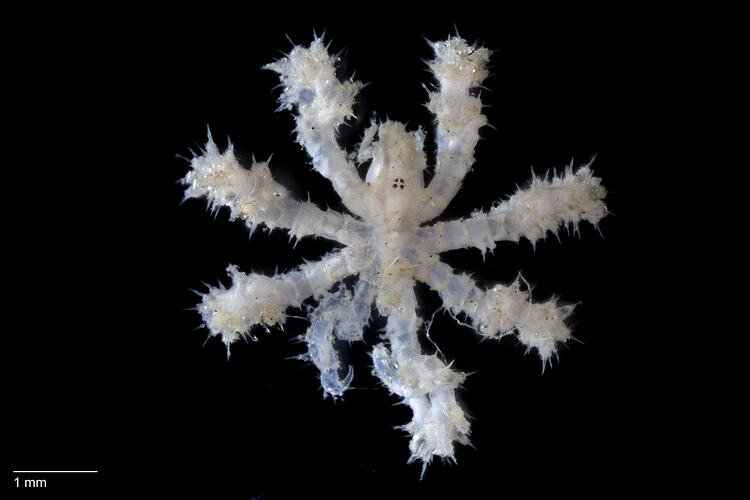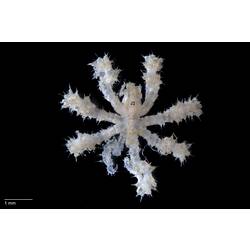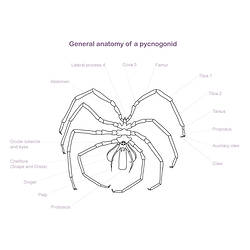General Description
Body with proboscis projecting outward from front, with the mouth at the tip. Central body (trunk) behind the proboscis, with a raised, rounded area (tubercle) bearing four or more eyes. Eight segmented walking legs attached to the sides of the trunk. Tall and spinous abdomen behind trunk. Leg span about 1 cm.
Biology
These sea spiders are sometimes covered in sand and shell fragments, which suggests some individuals seek refuge in or on sand. Some of the larvae are unusual because they have a wide paddle-like extension (lamella) on some of the leg spines, perhaps an indication that they live in the plankton as they develop into adults. It is known know if this is a characteristic of all larvae in this genus group. More than one species is almost certainly represented in specimens assigned to this species in Australian waters. Males carry the eggs, holding them between body parts called ovigers that hang under the animal.
Distribution
Southern Australia, excluding Tasmania. In central and eastern Victoria.
Habitat
Associated with seaweed and seagrass, possibly on sand, to depth of 25 m.
More Information
-
Animal Type
-
Maximum Size
1 cm
-
Habitats
-
Endemicity
-
Commercial
No
-
Conservation Statuses
DSE Advisory List: Not listed, EPBC Act 1999: Not listed, IUCN Red List: Not listed
-
Depths
Shallow (1-30 m)
-
Water Column Locations
On or near seafloor
-
Taxon Name
-
Scientific Author
Williams G, 1940
-
Common Name
Pycnogonid
-
Other Names
Sea spider
-
Phylum
-
Subphylum
-
Class
-
Order
-
Family
-
Genus
-
Species Name
bathursti



